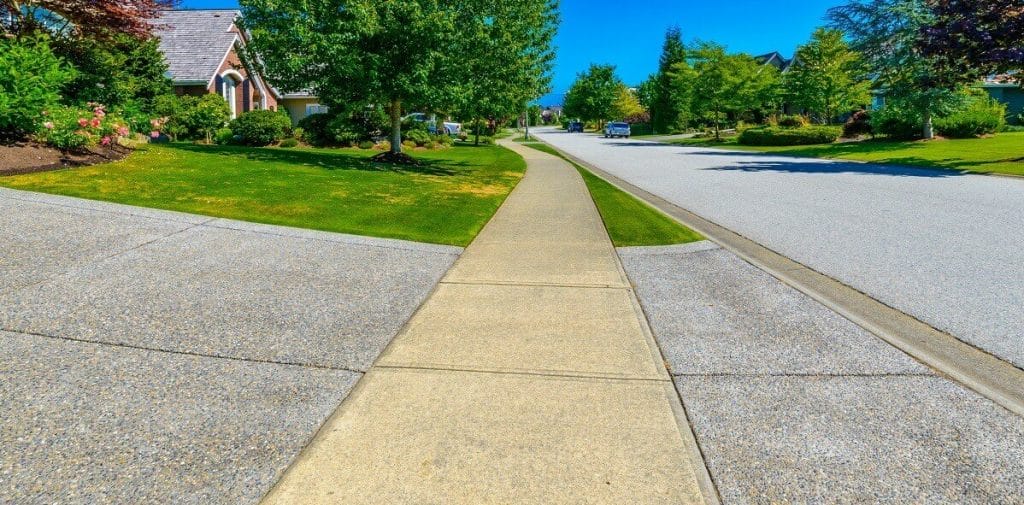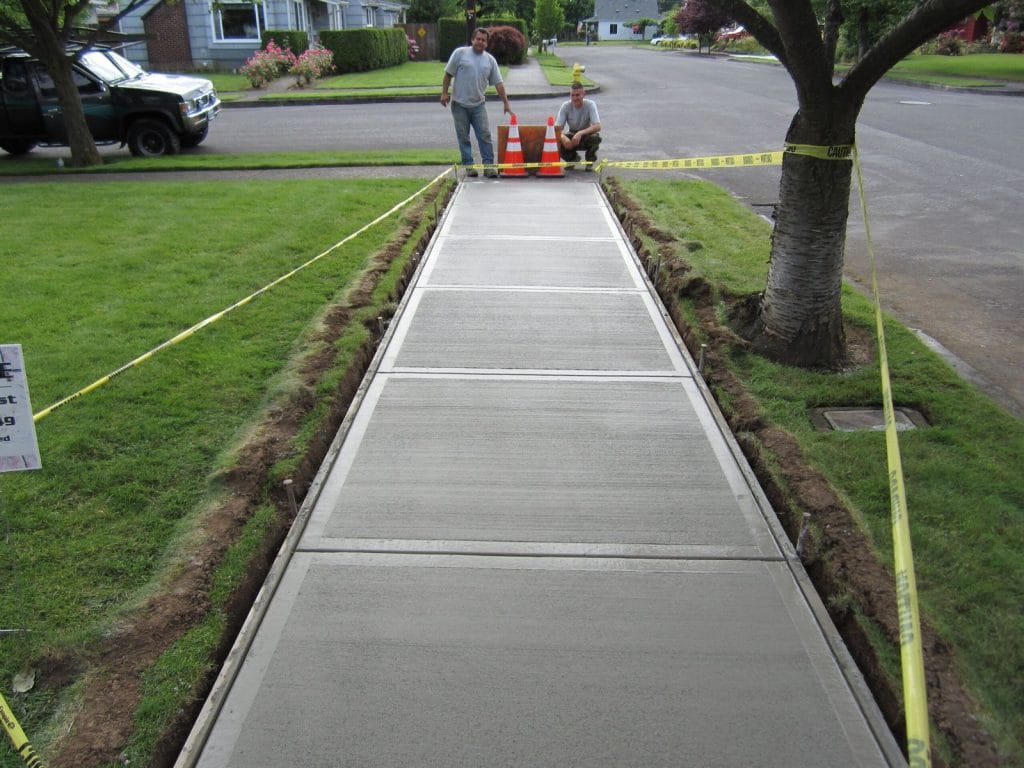
Concrete Sidewalks
Concrete sidewalks are a common feature in urban landscapes. They provide a safe and durable surface for pedestrians to walk on, and they can also add aesthetic appeal to outdoor areas. Whether you are looking to build a new concrete walkway or repair an existing one, it’s important to understand the process and techniques involved. Click on our full concrete page for all services
How to make a concrete sidewalk?
Building a concrete sidewalk requires careful preparation and planning. Before you begin, you need to determine the desired dimensions and layout of the walkway. This includes measuring the length and width, as well as marking the path where the sidewalk will be installed.
Preparation and planning
Once you have a clear plan, it’s time to prepare the area for the concrete. Start by removing any existing vegetation, rocks, or debris from the site. Ensure that the ground is level and compacted, as this will provide a solid foundation for the concrete slab.
Mixing and pouring the concrete
Next, you will need to mix the concrete. You can purchase pre-mixed bags of concrete from a local home improvement store, or you can mix it yourself using cement, aggregates, and water. Follow the manufacturer’s instructions for mixing ratios and use a concrete mixer or a wheelbarrow and shovel.
Once the concrete is thoroughly mixed, it’s time to pour it onto the prepared area. Start at one end and work your way towards the other end, using a screed to level the concrete as you go. Make sure the concrete is evenly distributed and fill any gaps or low spots with additional concrete.
Curing the concrete
After the concrete is poured, it needs to cure properly. This involves keeping the concrete moist and protected from drying too quickly. You can cover the concrete with plastic sheeting or use a curing compound to retain moisture. Allow the concrete to cure for at least 24 to 48 hours before walking on it.
What is the best way to build a concrete walkway?
When building a concrete walkway, there are a few factors to consider to ensure a successful and long-lasting result.
Choosing the right concrete mix
The first step is to select the right concrete mix for your project. There are different types of concrete mixes available, depending on the intended use and the climate in your area. Make sure to choose a mix that is suitable for outdoor applications and can withstand freeze-thaw cycles.
Creating a level surface
Before pouring the concrete, it’s important to ensure that the surface is level. Use a level and a straight edge to check for any high or low spots. If necessary, add or remove soil to achieve a level surface.
Adding control joints
Control joints are essential for preventing cracks in the concrete. These joints allow the concrete to expand and contract without causing damage. Place control joints at regular intervals along the length of the walkway, following the manufacturer’s recommendations.
How to create decorative effects on a concrete walkway?
If you want to add decorative effects to your concrete walkway, there are several options to consider.
Using stamped concrete
Stamped concrete is a popular choice for creating unique and textured designs. This technique involves pressing patterned stamps onto the freshly poured concrete to create the appearance of various materials such as brick, stone, or wood.
Using natural stone
Another option is to incorporate natural stone into your concrete walkway. You can embed stones of different shapes and sizes into the wet concrete to create a mosaic-like effect. This not only adds visual interest but also enhances the durability of the walkway.


Finishing techniques
There are various finishing techniques that can be used to achieve different textures and appearances. These include broom finishing, which creates a textured surface for better traction, and exposed aggregate, which exposes the natural aggregates in the concrete for a decorative effect.
What are the benefits of using concrete for a walkway and sidewalk?
Concrete offers several advantages when it comes to building walkways and sidewalks.
Durability and longevity
Concrete is known for its strength and durability, making it a suitable choice for high-traffic areas. A properly constructed and maintained concrete walkway can last for decades without significant wear and tear.
Low maintenance
Concrete requires minimal maintenance compared to other materials. It can withstand harsh weather conditions, is resistant to stains and spills, and can be easily cleaned with water and mild soap.
Cost-effectiveness
In the long run, concrete is a cost-effective option. While the initial installation cost may be higher than other materials, the durability and low maintenance requirements of concrete make it a cost-efficient choice over time.
How to fix cracks in a concrete sidewalk?
Cracks in concrete sidewalks are not uncommon and can occur due to various factors such as freeze-thaw cycles, heavy loads, or inadequate installation. Fortunately, repairing cracks in a concrete sidewalk is a relatively straightforward process.
Cleaning and preparing the crack
The first step is to clean the crack thoroughly. Remove any loose debris, dirt, or vegetation using a wire brush or a high-pressure washer. Make sure the crack is clean and dry before proceeding with the repair.
Using repair products
There are different types of repair products available for fixing cracks in concrete sidewalks. These include crack fillers, patching compounds, and epoxy injections. Choose a product that is suitable for the size and depth of the crack, and follow the manufacturer’s instructions for application.
Sealing the repaired crack
Once the crack is repaired, it’s important to seal it to prevent further damage. Apply a concrete sealer over the repaired area, following the manufacturer’s recommendations. This will help protect the repaired crack from moisture, chemicals, and other elements.

Oregon
Portland, Beaverton, Gresham, Hillsboro, Corbett, Cornelius, Fairview, Forest Grove, Gladstone, Happy Valley, King City, Lake Oswego, Milwaukie, Oregon City, Sherwood, Tigard, Troutdale, Tualatin, West Linn, Wilsonville, Wood Village, Aloha, Beavercreek, Boring, Cedar Mill, Clackamas, Damascus, Dunthorpe, Garden Home, Raleigh Hills, and West Slope

Washington
Vancouver, Battle Ground, Camas, Washougal, Ridgefield, La Center, Yacolt, Hazel Dell, Minnehaha, Salmon Creek, Walnut Grove, Orchards,